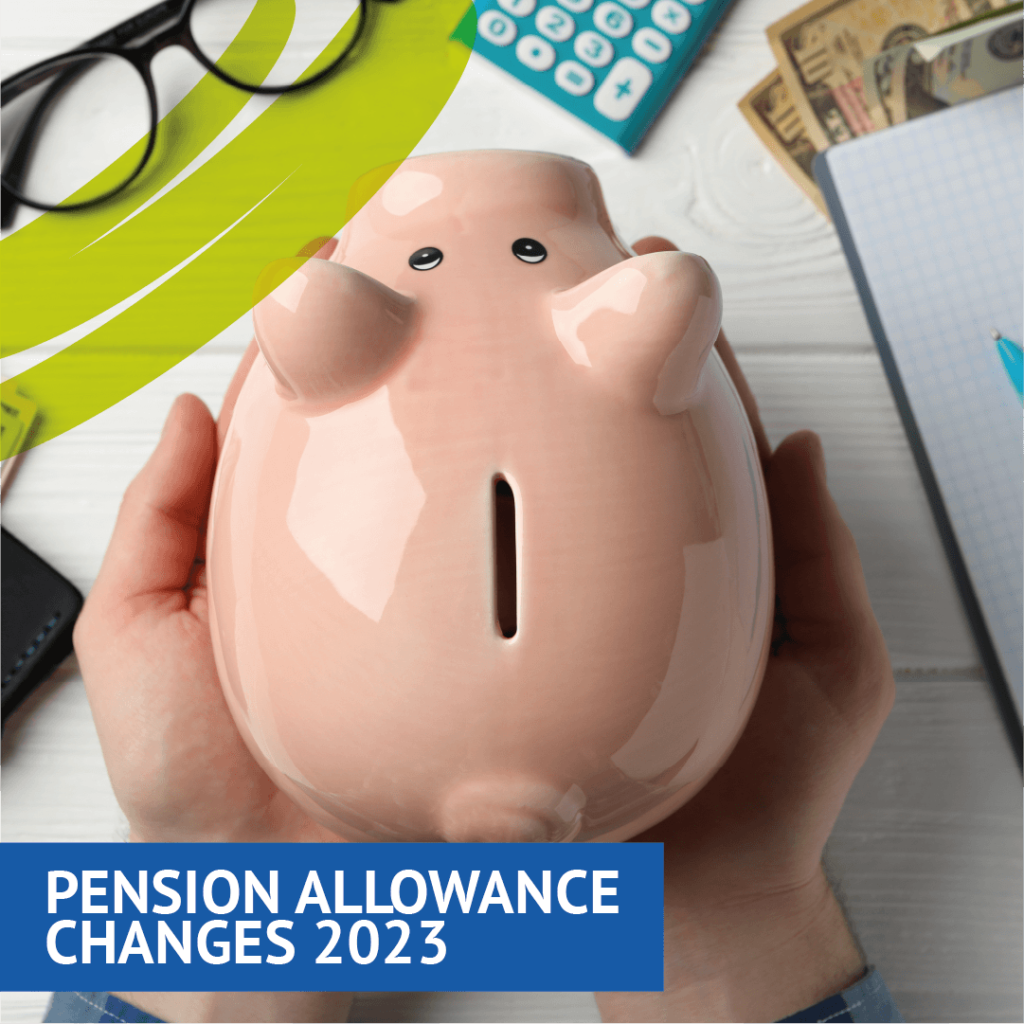Changes to Pensions Allowances in 2023
27th July 2023
From 6th April 2023 a number of key changes to pension allowances have applied. Relevant to all those using a recognised private pension scheme, these revisions have opened up new opportunities for tax relief through the use of pension contributions.
Our article breaks down the key changes and what they could mean for your tax planning and future strategies.
Quick Reminder: How do pensions offer tax relief?
Pensions Tax Relief as an Individual
The UK allows contributions into a private pension, provided either through an employer or personal pension, which can be used to finance retirement over and above the basic state pension.
Any income contributions paid into a private pension are calculated before the application of Income Tax or National Insurance Contributions, giving useful tax relief and an incentive to save for retirement. Furthermore, tax is not paid on any returns in pension savings, such as dividends or interest, and 25% of the pension savings can be taken as a tax-free lump sum.
Pensions Tax Relief as a Company
As a director of a limited company, you are able to add pre-tax company income into a pension pot. The employer pension contributions count as an allowable business expense so therefore reduces the company profits liable to Corporation Tax. Additionally, employer contributions have no limit, providing they meet the conditions of being “wholly and exclusively” applicable.
In the wake of dividend allowance reductions and increases in Corporation Tax, pensions represent one of the few attractive tax breaks available to limited companies that benefit both the individual and the business.
EXAMPLE
To see how pensions can prove a tax-efficient way of using income we can look at the following example:
-
-
- John is a higher rate tax payer. He not only receives the 20% tax relief at basic rate, but can claim for an additional 20% via his self assessment return – giving a total 40% tax relief on his pensions contributions.
- John paid £40,000 into his pension pot during the year 2022/2023, meaning he received a total £16,000 tax relief on his income.
- In addition to this, he did not have to pay NICs on any of his pension contributions, giving him further savings on his income liabilities.
- John was also able to claim £40,000 of allowable business expenses within his company tax return for his pension contributions, meaning he saved £7,600 of potential Corporation Tax savings at the 22/23 rate of 19%.
-
Key Pensions Change: Removal of Pensions Lifetime Allowance
The Lifetime Allowance (LTA) for private pensions applies to the total amount of savings that can be drawn from a pension over a lifetime. Applying to pensions such as employer schemes, final salary pensions and SIPPS, the LTA was introduced in 2006 and reached £1.8m in 2010/11 before a series of cuts reduced it to £1,073,100 by 2021 – a rate that was set to be fixed until April 2026. Exceeding the LTA would historically have triggered a 25% or 55% taxation charge on the excess, depending on how the pension was accessed by the retiree.
In this year’s Spring budget it was announced that the Lifetime Allowance (LTA) for private pensions would be scrapped – with the charge being removed from April 6th 2023 and the allowance axed entirely from April 2024.
In simple terms, this means that those able to save over £1m in their pension pot will now be able to do so without incurring the previous taxation charge on the excess. It is worth remembering that any pension savings not drawn prior to the death of the retiree are not liable to Inheritance Tax.
The government has cited that it hopes that the scrapping of the LTA will buck the trend of early retirement in high-level roles that benefit the UK economy, such as senior NHS consultants and civil servants. With no lifetime allowance applying to contributions, these high-earning individuals can now significantly increase their final, tax-efficient pension pot by remaining in work longer.
The Treasury said: “Workers aged over 50 left the labour market in the greatest numbers during the Covid-19 pandemic. To encourage this group to extend their working lives, the government is increasing tax relief on pensions.”
Key Pensions Change: Increase in Annual Pension Allowance
Since April 2023 the annual pensions allowance (the amount that can be paid into a private pension) has been increased by 50% from £40,000 to £60,000 – representing the first increase since 2010.
Going above the annual allowance triggers tax charges (at 20%, 40% or 45% depending on earnings) so the increase represents a huge opportunity to place more income into a pension pot.
EXAMPLE
Taking the previous example of John, we can see how this change has positively impacted how he is able to use his income in a tax-efficient manner:
- John remains a higher rate tax payer. He not only receives the 20% tax relief at basic rate, but can claim for an additional 20% via his self assessment return – giving a total 40% tax relief on his pensions contributions.
- This year John is able to pay the new maximum amount of £60,000 into his pension pot during the year 2023/2024, meaning he will receive a total £24,000 tax relief on his income.
- In addition to this, he still did not have to pay NICs on any of his pension contributions, giving him further savings on his income liabilities.
- John was also able to claim £60,000 of allowable business expenses within his company tax return for his pension contributions, meaning he saved £15,000 of potential Corporation Tax savings at the 22/23 rate of 25% (as his business meets the threshold for a higher rate of Corporation Tax).
Key Pensions Change: Money Purchase and Tapered Annual Allowance
Another two key changes to pension allowances are related to the Money Purchase Annual Allowance and the Tapered Annual Allowance.
- The money purchase annual allowance (MPAA) will increase from £4,000 to £10,000 from April 2023. The MPAA applies to anyone who has already taken income from their pension.
- The adjusted income for Tapered Annual Allowance will rise from £240,000 to £260,000. If your total income for the tax year plus pension contributions made by you and your employer towards occupational pension schemes exceeds £260,000 then your annual allowance may be lower than £60,000.
Do You Need to Review Your Use of Pensions Allowance?
Income tax reliefs associated with pensions contributions can prove a useful strategy not only for reducing liabilities but also to remain under the thresholds associated with both Self Assessment and Corporation Tax returns.
There are specific conditions associated with their use however, set by HMRC, and it is important to ensure you act within their parameters:
- Do they pass the “wholly and exclusively” test?
- Is the total level of remuneration (including salary, BIKs, dividends, pension contributions) commercially “reasonable” for the level of work being done?
- Do the pension contributions total more than the company’s annual profits?
- Do your contributions follow a similar pattern to those employees operating at the same level within the business?
Before taking any action regarding use of pension contributions within your annual tax planning you should consult your accountant or financial advisor.
The TTRB team and Key Wealth Management team are available to inform you on both tax planning and pensions planning respectively. Please contact us for further information.





